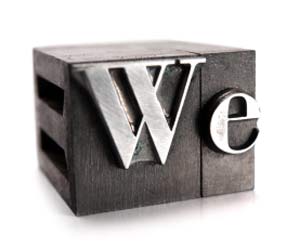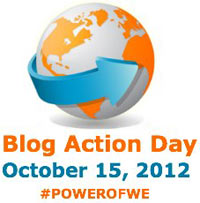 ‘We’ can mean something different every time you say it.
‘We’ can mean something different every time you say it.
For a business, apart from being self-referential (‘we do this’), ‘we’ usually means business + stakeholder.
Here are six types of ‘we’ where working together on responsibility activities creates more than working alone:
- Where ‘we’ = business + customer
There have been a number of initiatives where businesses and customers have combined their efforts on particular corporate responsibility projects. Many of these are in the retail sector, such as:
- Tesco’s Buy One Give One Free (buy an item of school uniform; Tesco will give an entire school uniform to a child in Kenya, Bangladesh or Sri Lanka)
- The Big Bra Hunt initiated by Oxfam but also part of the Oxfam/Marks & Spencer Clothes Exchange. Uniqlo also operate a clothing-recycling CSR strategy with UNHCR. These projects support the reuse aspect of reduce-reuse-recycle by asking customers to return the clothes they’ve finished with for reuse elsewhere.
There are also examples where companies work together to help customers improve their energy efficiency, such as utility companies working with OPower to communicate with customers about their electricity usage using gamification ideas and providing information on how to make savings. When provided with this information, consumers typically respond by reducing their bills by 2.5-4% a month, and the OPower website reports savings of over 1,520,000,000KW so far…
- Where ‘we’ = business + NGOs
There are many, many examples of companies working with NGOs to combine skills for the greater good. Here is just one of the many:
HSBC is working with three NGOs (Earthwatch, Wateraid and WWF) on a Water Programme. Together, by combining financial strength, scale and expertise in the issues involved, they will tackle problems of water supply and sanitation in river basins in order to benefit communities in need and enable economies to prosper. Over 100,000 HSBC employees will be involved…
- Where ‘we’ = business + business
Businesses working together on CSR projects or initiatives include:
- companies related by supply chain. An example of collaboration here is Sedex which enables the secure exchange of sustainability information between suppliers and their customers. By working together, it reduces the burden of multiple audits on suppliers, while supporting buyers in managing ethical and responsible practices in their supply chain.
- competitors collaborating in consortia, such as the Sustainability Consortium which involves companies within a sector working together to develop standards and tools to measure sustainability.
- Where ‘we’ = business + employees
This is perhaps both more commonplace and more difficult to pin down. The usual style of interaction is of the business asking employees which charities they’d like the business to support, or of the business match-funding employees’ fund-raising activities, or of the business supporting employees to work on community projects during work-time. These are at the simpler end of ‘we’.
A slightly more complex angle is that of businesses supporting employees to change their energy-related choices in their private lives. One example is SwissRe. Their COYou2 Reduce and Gain programme enables employees to claim subsidies from the company for a range of emissions-cutting investments, such as groundwater heat pumps, solar panels or hybrid cars.
- Where ‘we’ = business + crowd
Examples here include companies that have asked ‘the crowd’ to come up with sustainability ideas or to nominate and vote for causes to be supported:
- Unilever: asking individuals within their community to make sustainability commitments (on Facebook) or for asking for ideas to help consumers be more environmentally conscious
- the new Pepsi Refresh project for Canada and Benetton’s ‘Unemployee of the Year’ project: asking consumers to propose ideas and then vote to see which should receive funding.
- Where ‘we’ = business + academia
And companies work with academics to move sustainability forward in a variety of different ways. For example:
- Shell developed the Hearts and Minds safety toolkit, based on 20 years of university research. Profits from the sale of this kit to other companies fund research and development to help companies improve their HSE performance.
- BT is working with the University of Cambridge’s Engineering and Design Centre on a toolkit for “Designing our Tomorrow“, which is scheduled to be launched next year. The toolkit will allow companies to evaluate the costs and benefits, and the environmental impact, of using different materials or of changing their approach.
- Nestle worked with Swiss College of Agriculture to develop the RISE system for the dairy sector to assess sustainability across multiple dimensions
There you have it: 6 ways in which businesses are grouping and regrouping in different ‘we’ formations to work towards a more responsible future.
 This post is part of Blog Action Day, which this year is discussing “the power of we”.
This post is part of Blog Action Day, which this year is discussing “the power of we”.
Previous contributions to Blog Action Day have been:
2011: Lessons From Food Security: Telling Us What Matters
2010: Mixing Oil and Water
2009: Climate change and the corporate site
2008: Celebrating the FTSE 100: action on the breadline
2007: Enticing the green investor
Lucy is Editor at Corporate Eye

